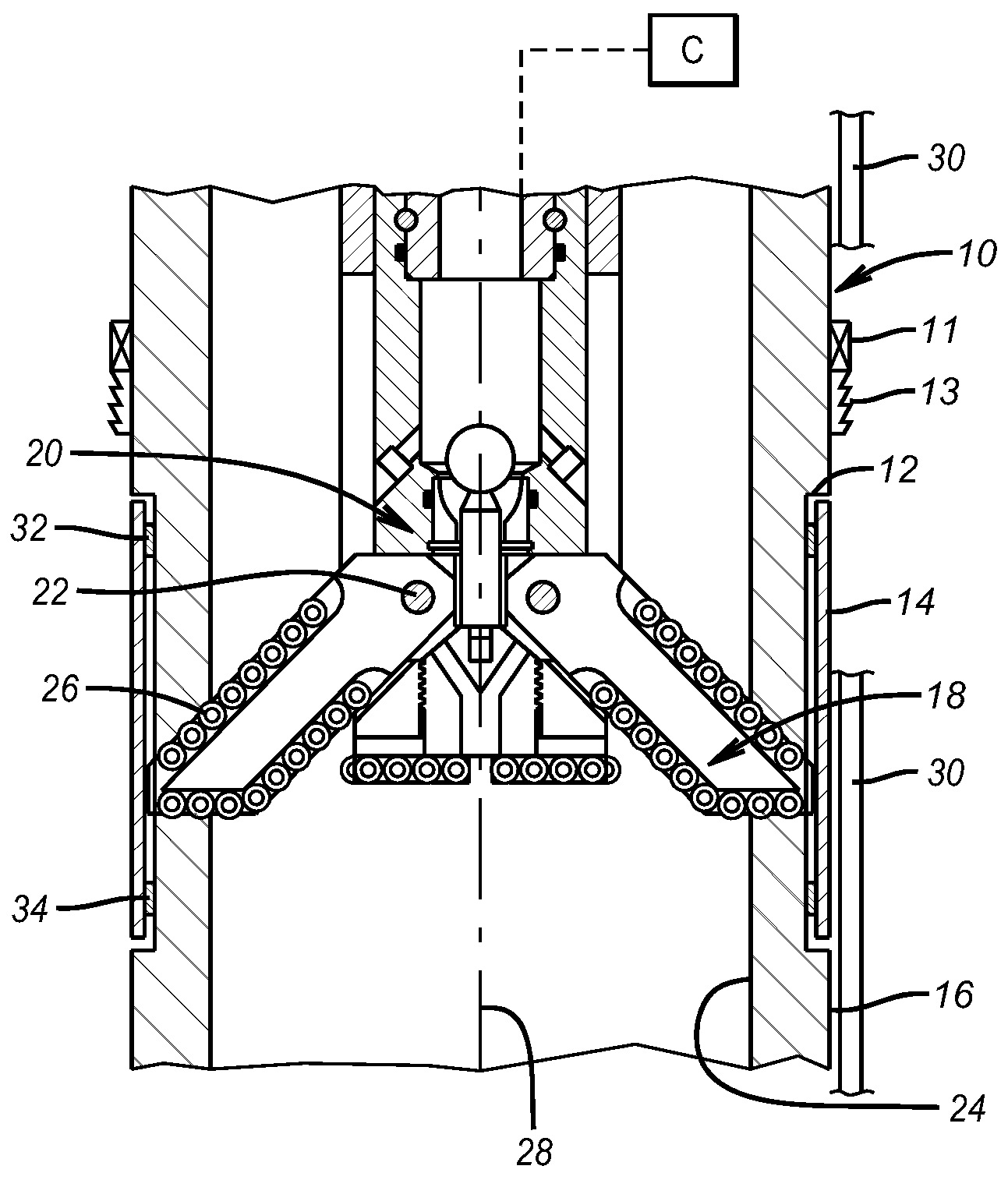Subterranean Tubular Cutter with Depth of Cut Feature
a technology of subterranean tubular cutters and features, applied in the field of tubular cutters, can solve the problems of further damage done downhole, and achieve the effect of preventing further cutting action
- Summary
- Abstract
- Description
- Claims
- Application Information
AI Technical Summary
Benefits of technology
Problems solved by technology
Method used
Image
Examples
Embodiment Construction
[0008]Referring to the FIGURE it can be seen that 10 is the tubular to be cut. Tubular 10 can be a part of a packer mandrel that has a sealing element 11 and slips 13 (shown schematically in the FIGURE) where the slips 13 release their grip from a set position when the mandrel is cut through, as one example. It can have an exterior recess 12 that supports a sleeve 14. Various threaded connections that make it possible to dispose a sleeve 14 in the vicinity of the outer surface 16 of the tubular 10 are omitted but those skilled in the art will appreciate that various ways of securing a member for rotatable movement (whether initially secured such as by a shear pin that breaks (not shown) or initially loosely mounted) when contacted by a cutter blade 18 of underreamer 20 that is of a known design. While cutter blade 18 is depicted as a mechanical cutter it is intended to be schematic and representative of other types of cutters both stationary and movable including but not limited to ...
PUM
 Login to View More
Login to View More Abstract
Description
Claims
Application Information
 Login to View More
Login to View More - R&D
- Intellectual Property
- Life Sciences
- Materials
- Tech Scout
- Unparalleled Data Quality
- Higher Quality Content
- 60% Fewer Hallucinations
Browse by: Latest US Patents, China's latest patents, Technical Efficacy Thesaurus, Application Domain, Technology Topic, Popular Technical Reports.
© 2025 PatSnap. All rights reserved.Legal|Privacy policy|Modern Slavery Act Transparency Statement|Sitemap|About US| Contact US: help@patsnap.com


